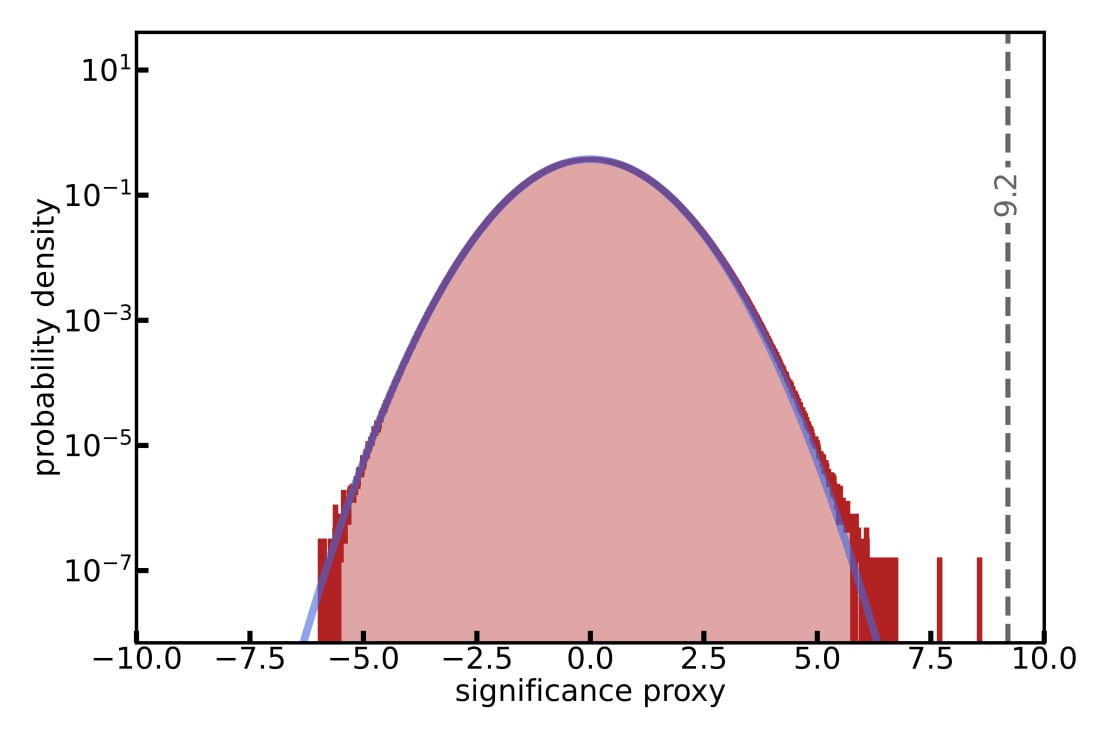When a star dies, it succumbs to gravitational forces, collapsing into a tiny star made of densely packed neutrons or even forming a black hole that swallows everything up. As matter continues to fall into the star’s core, matter bouncing back triggers what are called core-collapse supernovae (CCSNe).
Shortly after most collapses, a new and fading star can be observed, by telescopes or even by the naked eye. But in many cases, the CCSNe may be hidden if it is obscured by dust or consumed by a black hole. During the collapse and explosion, tiny ghostlike particles called neutrinos can be found bursting through.
The IceCube Neutrino Observatory, a cubic-kilometer detector at the South Pole, searches mainly for high-energy neutrinos but can also detect lower energy neutrinos. These low-energy, MeV neutrinos are emitted at the time of a star’s collapse, providing the only evidence of an obscured supernova.
In a new study submitted to The Astrophysical Journal, the IceCube Collaboration presents a search for hidden galactic CCSNe using 11 years of data taken by IceCube. No evidence for CCSNe was found in the Milky Way or neighboring dwarf galaxies. However, the results demonstrated IceCube’s sensitivity to the signal of a galactic supernova in a larger model space than previously studied, especially for low-mass stars, which are more abundant.

The lower their energy, the harder it is to detect neutrinos—only one in 500 neutrinos leaves a trace when interacting within IceCube’s instrumented volume. However, the neutrino burst from a supernova is exceedingly intense. This allows researchers to analyze the neutrino excess rate in all of IceCube’s optical sensors, hoping to trace the neutrinos back to a developing supernova.
IceCube takes advantage of the deep ice below the South Pole where it is more than a billion times darker than a moonless night sky on Earth. The sensors are optimized for low noise by minimizing radioactive contamination, and the photomultipliers run on minimal noise conditions at cold temperatures of -40°C in ice, an ideal environment for detecting the faint neutrino interactions from supernovae.
“Unfortunately, we did not find evidence for a supernova in our galaxy and nearby dwarf galaxies,” says Lutz Köpke, a professor of physics at Johannes Gutenberg-Universität Mainz in Germany and a study lead. “This finding is, frankly, not unexpected, as the mean time between galactic supernova explosions has been estimated to be around 60 years.”
Köpke supervised former PhD student Alexander Fritz, who carried out the work in this analysis.
Future IceCube studies will become only more sensitive to galactic CCSNe with improved sensors in the upcoming IceCube Upgrade and IceCube-Gen2 projects, which will not only lower the background but increase detection capabilities.
“IceCube can see more than 99% of supernovae from progenitor stars, even if they have the minimal mass that makes an explosion possible,” says Köpke. “Now we just have to wait and see.”
+ info “Search for Galactic core-collapse supernovae in a decade of data taken with the IceCube Neutrino Observatory,” IceCube Collaboration: R. Abbasi et al., The Astrophysical Journal 961 (2024) 1, 84, iopscience.iop.org, arXiv